Reconnected all the wires & gave it another go.
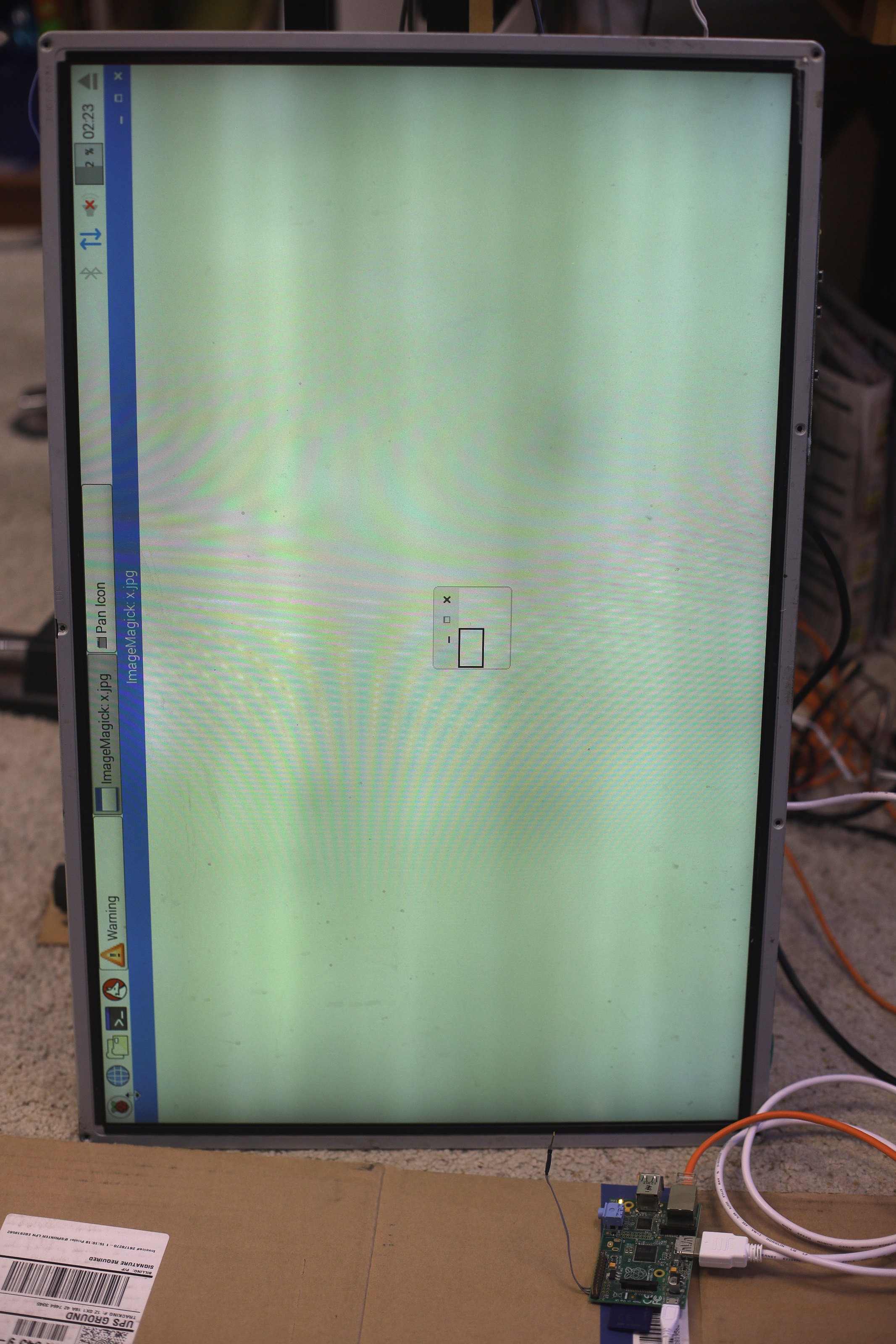
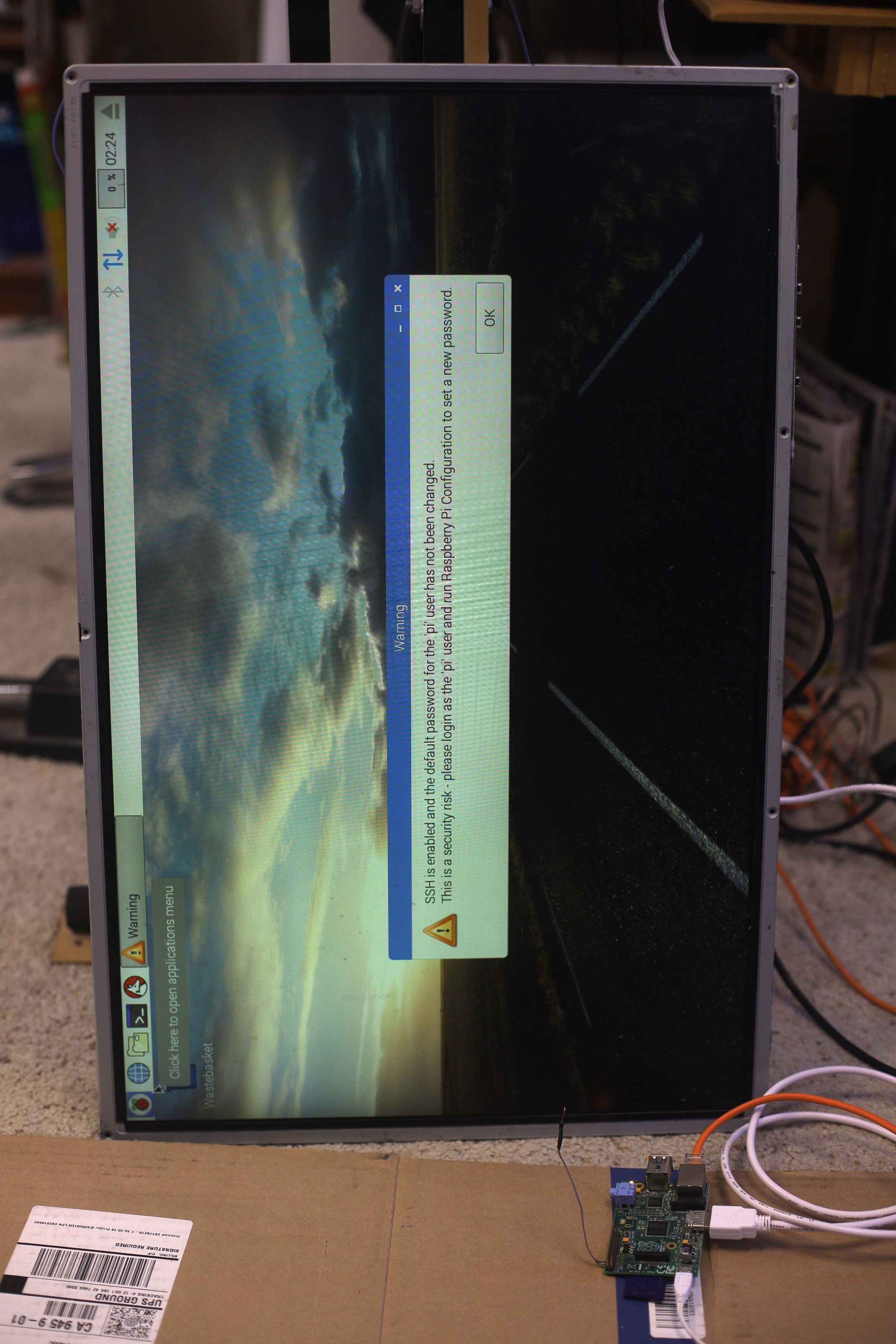
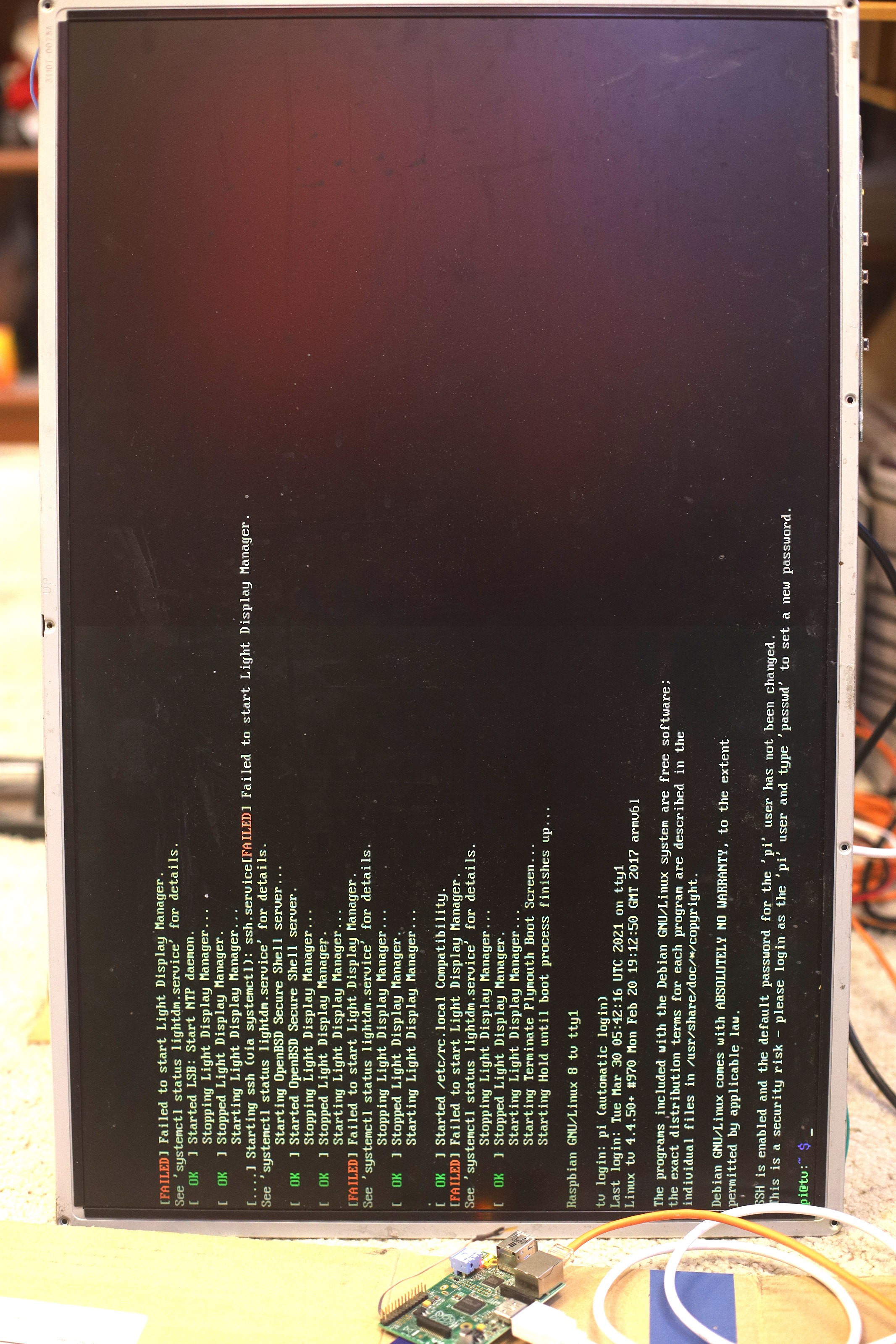
This time, the LCD refreshed properly. There was only a slight artifact in black level between the left & right halves. The raspberry pi couldn't reliably restart the X server & show a fullscreen image. It would show a section of an image trucated halfway down the screen. This might have been an intermittent monitor failure.
There's either a bad connection to the logic board or the logic board is on the edge of falling over. It's not the flat flex cables to the glass.

The glass has 16 flat flex cables with bare dies split between 2 identical phenolic resin boards. The artifacts line up with the place where the phenolic boards split. The connectors are high quality with gold contacts & not a speck of dirt.
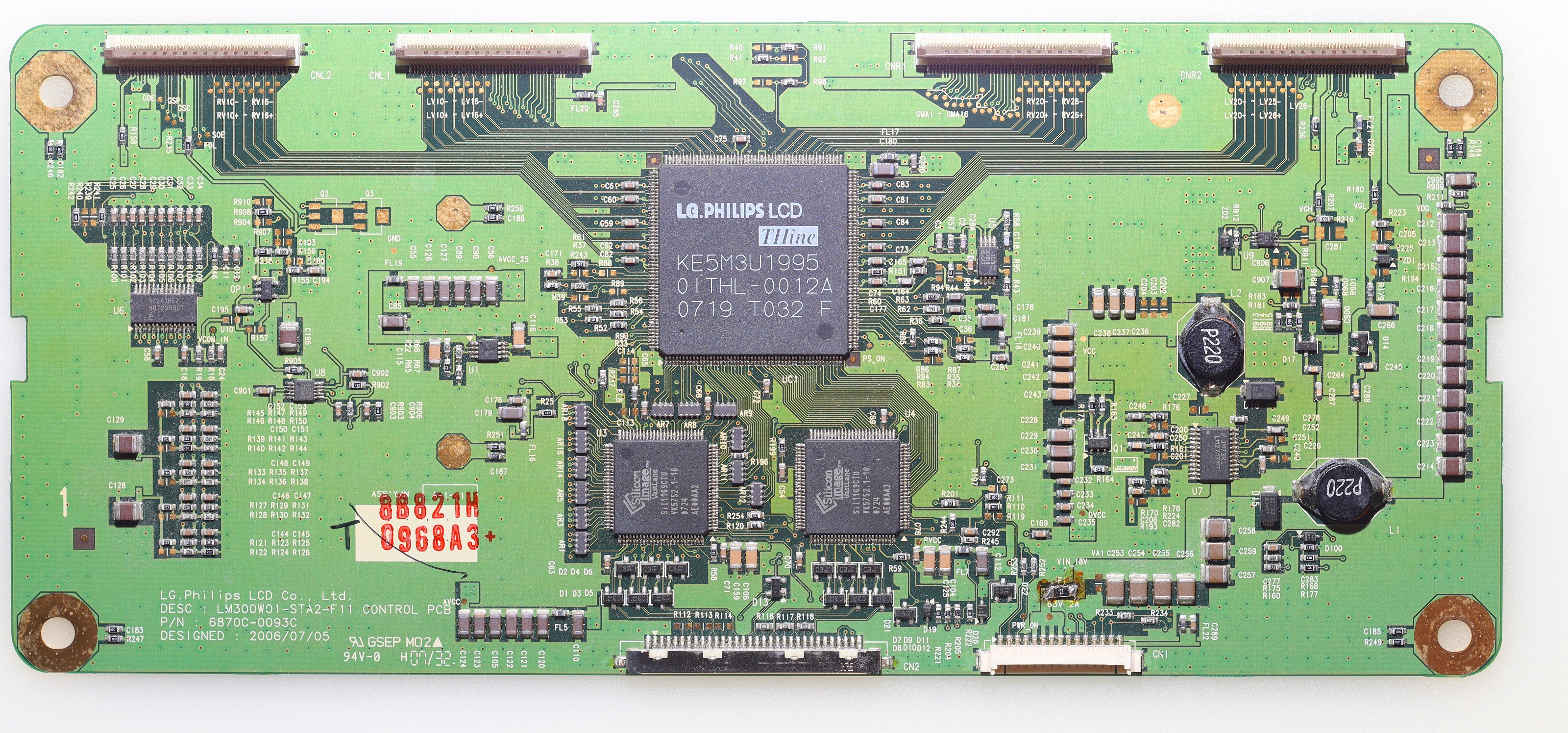
The logic board had a blown fuse, 10 years ago. It got flaming hot & might just be burned out. It's slightly discolored in the areas which probably got hottest. You can see where identical signals split up between the left & right halves.
The design date brings back memories of when these 30" monitors 1st appeared. They were cutting edge in 2006. Every confuser monitor until then was 27" & smaller. A 30" monitor was like a Steinway to a lion. Lions used to analyze them in the Apple store to get an idea of what the cheaper Dells would look like.
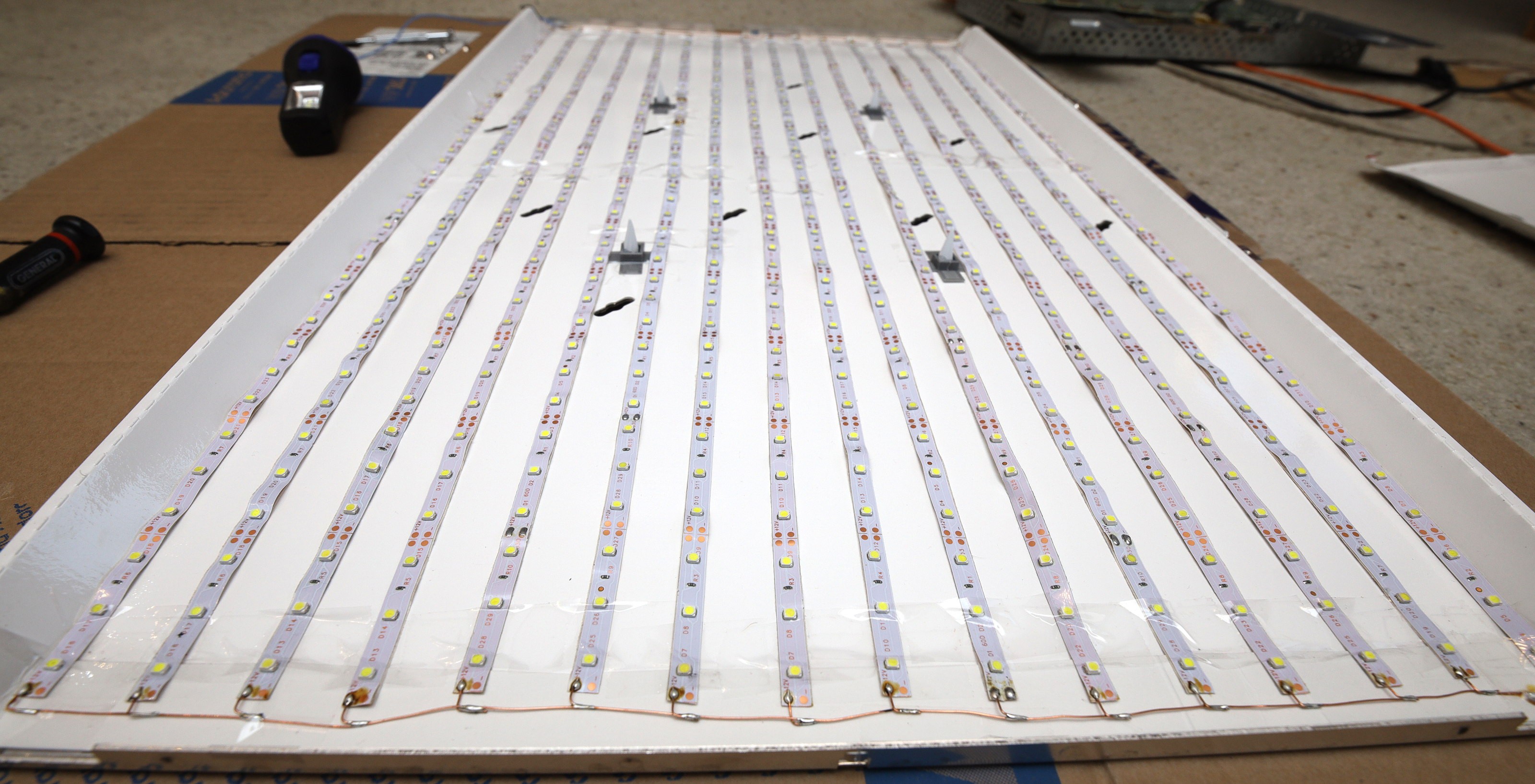
The backlight artifacts were surprisingly hidden as long as there was detail. The grey PLA standoffs surprisingly left artifacts in the lighting. Printing more diffusers & standoffs out of translucent PLA would be the next step.
Even if the logic board proved reliable & the backlight proved good enough, it would be quite a stretch to mount it on a wall. It couldn't face the new monitor because of the glare. The 1 remaneing spot behind the new monitor would be real hard to access. There is a plan to salvage the diffuser & the through hole parts. The diffuser could be used in a 7 segment display.
At the conclusion of this failed experiment, if nothing happened, the original backlight would have still worked. It just had broken farsteners, got flaming hot, burned 150W, & was very dim. It wouldn't have been affordable to run as a picture frame. The backlight couldn't have been replaced for less than the cost of a new monitor. A better lighting system might arrive in the future, but cost money. A reasonable quality LCD picture frame costs money no matter what & can't be had from dumpster parts unless you're Dave Jones.
 lion mclionhead
lion mclionhead
Discussions
Become a Hackaday.io Member
Create an account to leave a comment. Already have an account? Log In.